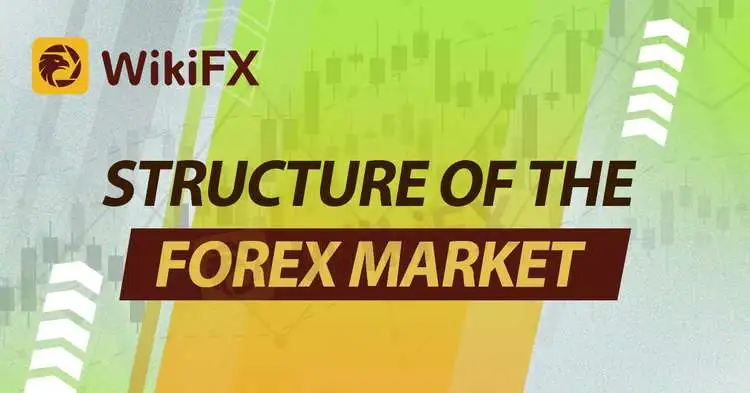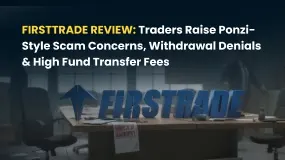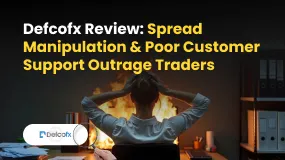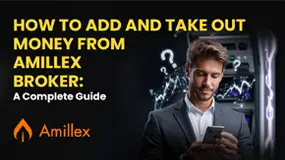简体中文
繁體中文
English
Pусский
日本語
ภาษาไทย
Tiếng Việt
Bahasa Indonesia
Español
हिन्दी
Filippiiniläinen
Français
Deutsch
Português
Türkçe
한국어
العربية
STRUCTURE OF THE FOREX MARKET
Abstract:The Forex market is a textbook example of a perfect market built by humans. A market is defined as any location where buyers and sellers come together. When there are numerous buyers and sellers, and they are all aware of who has the best prices, perfect competition is accomplished. Consider ordering your favorite pizza for the greatest price and having it delivered in less than a second. That is what the forex trading market is capable of, despite the fact that it solely deals with currency exchange.

The Forex market is a textbook example of a perfect market built by humans. A market is defined as any location where buyers and sellers come together. When there are numerous buyers and sellers, and they are all aware of who has the best prices, perfect competition is accomplished. Consider ordering your favorite pizza for the greatest price and having it delivered in less than a second. That is what the forex trading market is capable of, despite the fact that it solely deals with currency exchange.
MARKET CONCENTRATION
When we have a single seller, whether it is a bank or a pizza restaurant, they may set the price to whatever they see suitable and even manipulate it at their leisure. This is a centralized market. Obviously, unless you are the one making the decisions, a centralized market is not advantageous for you. The good news is that the forex market is now decentralized; thus, let us examine the structure of this dynamic market.
PARTICIPANTS IN THE FOREX MARKET – DECENTRALIZED MARKET STRUCTURE
With the technological revolution, the Forex market structure was reorganized, and it is now an even more efficient market. The Spot Forex market is decentralized, which means no one or centralized player controls the market. Furthermore, because so many people influence the price of a currency pair, there is no one price for a given currency at any given time. Because quotes from various currency dealers differ, the price you see when trading is the retail price, which is determined by matching your buy or sell request with the best price provided in the liquidity pool.
While this may appear chaotic, the forex market is well organized and may be compared to layers or ladder rungs where each player seeks counterparties. The large banks are at the top of the ladder, while retail dealers are at the bottom. Let's take a look at what's available on each rung of the forex market structure.
THE INTERBANK MARKET
Banks in the Interbank Market want to deal with large amounts of FX and are seeking for those who can match their capacity requirements. Of course, this is when other banks enter the picture. This is the interbank market layer of the forex market structure, and it is located at the very top of the ladder. This layer's players trade directly with one another or through electronic or voice brokers such as Reuters Matching and EBS (Electronic Brokering Services). These brokers fiercely compete with one another in order to provide the greatest prices, which can only be obtained when you are linked to a bigger number of interested parties. More parties equal more liquidity, which equals lower interest rates. As a result, some currency pairings are more liquid with one broker than another.
It's also worth noting that while all banks in the interbank market may see the rates that each other is providing, it doesn't guarantee that any of them can make trades at those rates. Other considerations, such as reputation and credit status, come into play here.
THE INSTITUTIONAL SECTOR
Under the interbank market, the next rung of the ladder is occupied by hedge funds, retail market maker brokers, ECN brokers, and other financial institutions that are unable to establish credit agreements with the large banks and, as a result, must interact with commercial banks. This serves as a link in the forex market system between the interbank market and retail traders. While still giving better rates than retail traders, the rates offered here are somewhat higher and more costly when compared to interbank rates.
RETAIL INDUSTRY
The retail dealers are at the bottom of the food chain. Retail traders were formerly unable to engage in the forex market; now, owing to electronic trading, retail brokers, and the internet, even the average individual may now trade currency pairs with ease. Retail traders may not always obtain the best prices when compared to interbank markets, but in the struggle for clients, assisted by technology, major reputed brokers can give spreads and circumstances that put retail traders on level with the larger banks.

Disclaimer:
The views in this article only represent the author's personal views, and do not constitute investment advice on this platform. This platform does not guarantee the accuracy, completeness and timeliness of the information in the article, and will not be liable for any loss caused by the use of or reliance on the information in the article.
Related broker
Read more

Firsttrade Review: Traders Raise Ponzi-Style Scam Concerns, Withdrawal Denials & More Issues
Have you lost all your capital while trading via Firsttrade? Does the US-based forex broker disallow you from withdrawing funds? Do you have to pay massive fees when transferring funds? Does your trade get affected because of frequent malfunction in the trading app? These have been haunting many traders at Firsttrade. Consequently, many of them have raised complaints online. In this Firsttrade review, we have shared such complaints. Keep reading to know about them.

Defcofx Review: Spread Manipulation & Poor Customer Support Outrage Traders
Does the poor customer support service leave you stunned when trading via Defcofx? Do you receive blunt, negative responses from the support team on several trading queries? Does the Saint Lucia-based forex broker pile on the losses for you by manipulating forex spread charges? In this Defcofx review, we have shared some complaints made against the broker. This will further answer your question: Is Defcofx real or fake?

How to Add and Take Out Money from Amillex Broker: A Complete Guide
Good money management is the foundation of successful trading. Learning how to make an Amillex Broker deposit and withdrawal is your first step toward trading with confidence. We know that for any trader, moving money must be safe, fast, and simple. This guide gives you a complete, step-by-step walkthrough for all amillex broker funding activities, so you can manage your account with total clarity. The whole process, from your first deposit to taking out profits, is made to be simple. You start by logging into your secure client area, picking a payment method that works for you, choosing the amount, and confirming the transaction. This guide will cover detailed deposit instructions, a full breakdown of withdrawal steps, a comparison of available payment methods, and a detailed look at the security measures protecting every transaction.

MH Markets Overview: Fees, Platforms, and Regulation
Choosing a forex broker is an important step for any trader. With so many options available, the main question is always: is this broker a safe and effective partner for my trading goals? This review is designed to answer that question about MH Markets. We will examine the key parts of their service—regulation status, trading costs, platform features, and overall user experience—to give you a clear, complete picture. Our goal is to give you the information you need to decide if MH Markets fits your strategy and risk comfort level.
WikiFX Broker
Latest News
WikiFX Elites Club Committee Concludes Voting! Inaugural Lineup Officially Announced
Fake Trading Platforms Are Spreading Fast Across Asia | How Investors Are Being Tricked
eToro CopyTrader Expands to U.S. Investors
Is MH Markets Safe or a Scam? Regulation and Fund Security Explained
How to Add and Take Out Money from Amillex Broker: A Complete Guide
FCA warning: These Firms are on the list
Ponzi Scheme Operator Sentenced to 14 Years in Western Australia
Dubai VARA Warns Against Vesta Investments
Don’t Get Scammed: A Roundup of Common Online Fraud Tactics in Forex
T4Trade broker Review 2025: Is T4Trade Regulated?
Currency Calculator



